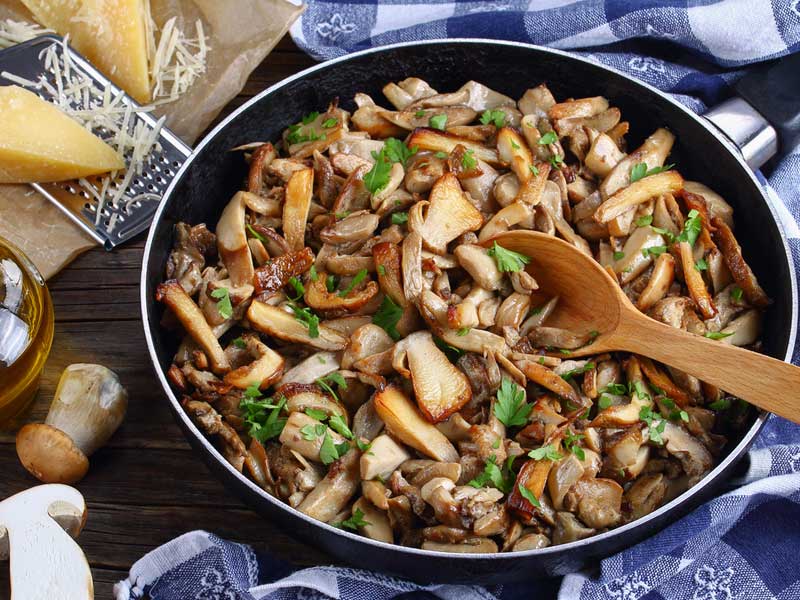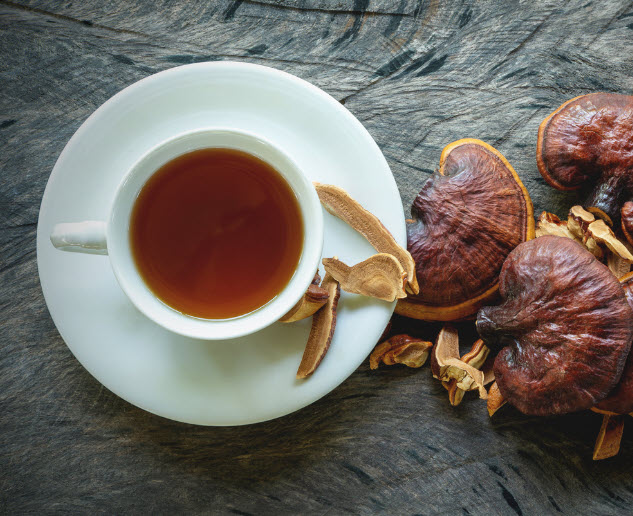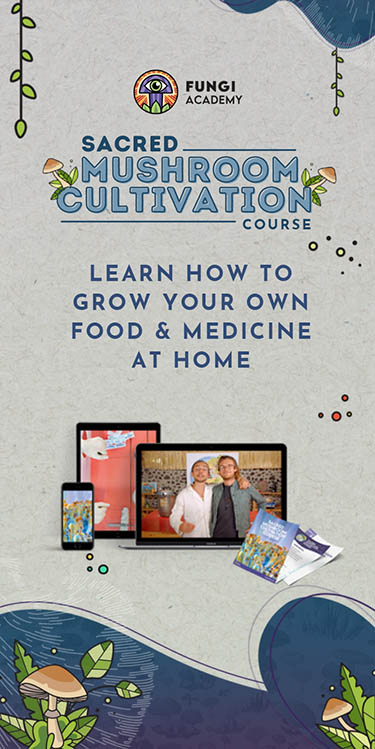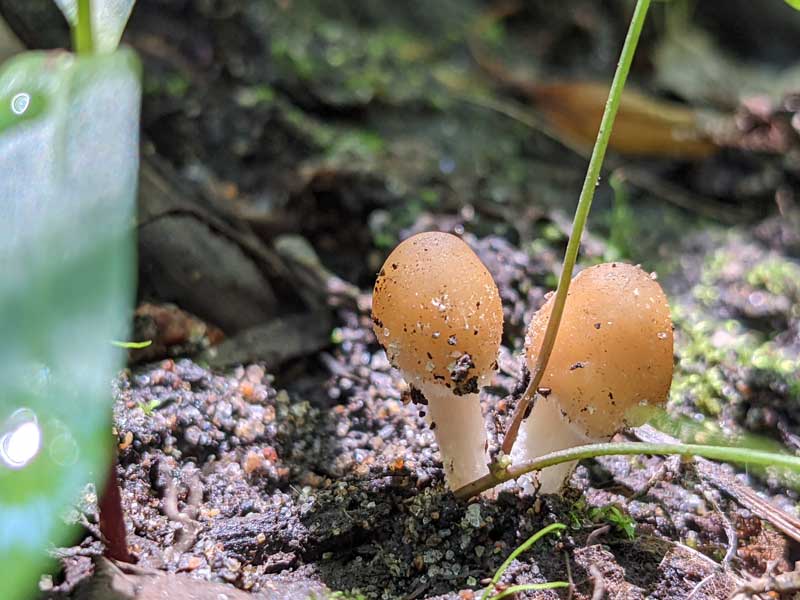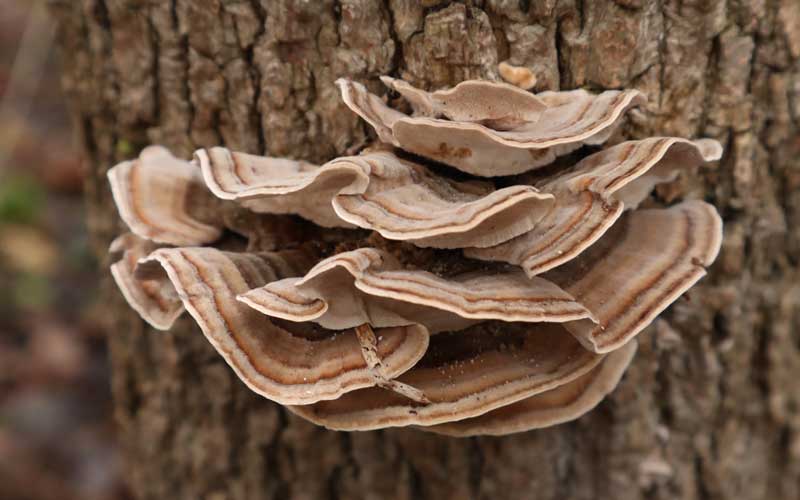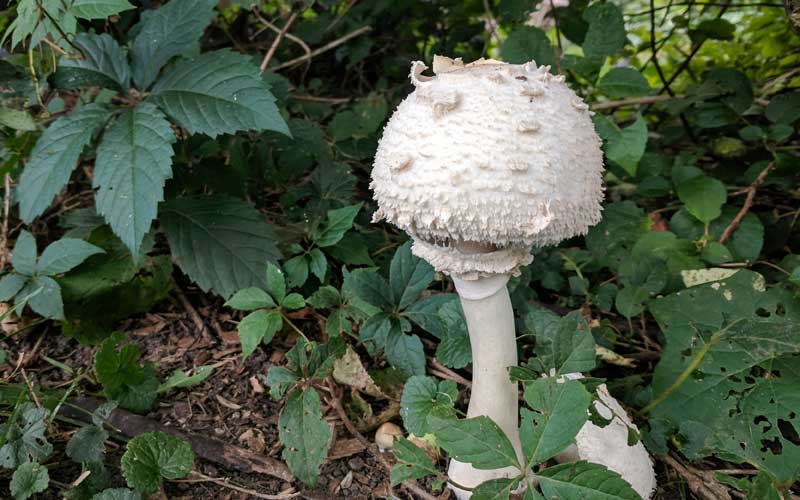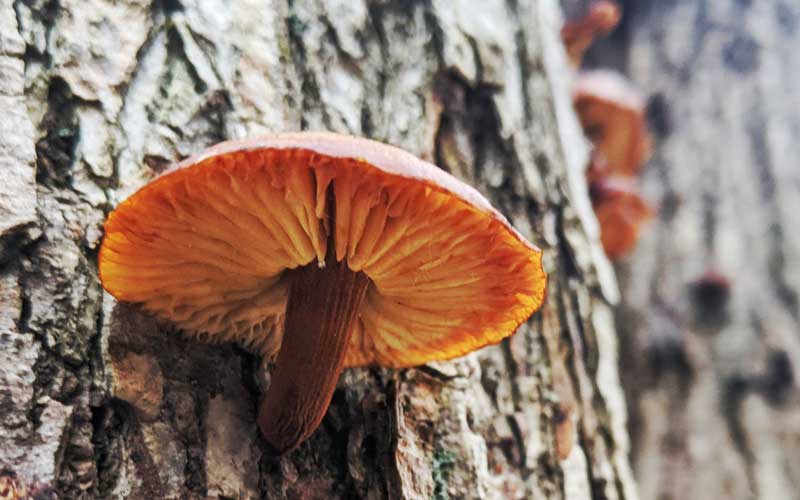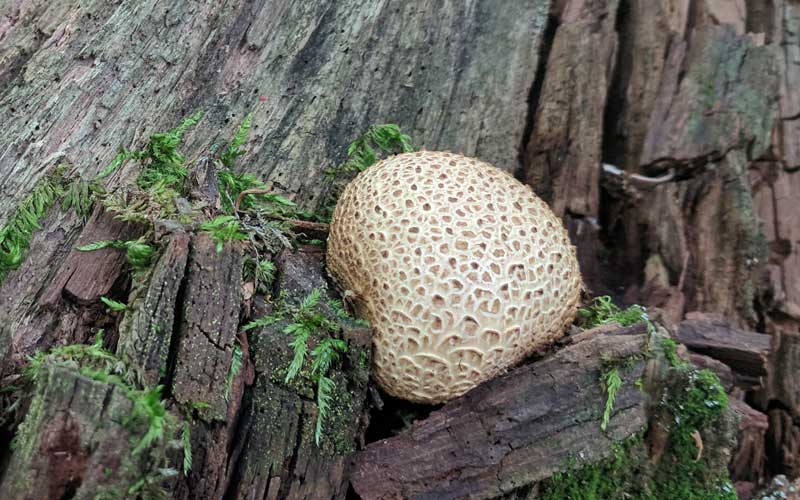- Home
- In the Kitchen
- Fungi Fermentation
If you love beer, wine, bread, and cheese, say thank-you to the fermentation power of fungi.

Fungi are essential in various food fermentation processes, contributing to the creation of unique flavors and textures in some of our favorite culinary delights. Yeast and mold are two prominent groups of fungi that play pivotal roles in the art of fermentation.
Transforming sugars into alcohol and carbon dioxide with yeast.
Yeast, a type of fungi, is a key player in alcoholic fermentation. Used in brewing beer, making wine, and baking bread, yeast breaks down sugars into alcohol and carbon dioxide, creating effervescence in beverages and helping dough rise in bread-making.
When you think about it, beer, wine and bread are pretty fundamental to most countries and cultures. Without fungi, our kitchens and homes would be a whole lot less interesting.
Elevating flavor profiles in cheese with mold.
While mold may be associated with spoilage, certain molds are intentionally used to make specialty cheeses like blue cheese and Camembert. These molds introduce unique flavors and textures, enhancing the complexity and character of the cheese.
Currently, the French are freaking out because cheese makers are running out of the very particular mold used to make Camembert. Too much demand, and or enough mold!
Fungi's role in Sauerkraut and other fermented vegetables.
Sauerkraut and other fermented vegetables have a long history in various cultures around the world, with each region adding its own unique twist to the fermentation process. Here are some examples of cultures with a rich tradition of fermenting vegetables:
1. Germany: Sauerkraut, which translates to "sour cabbage" in German, has been a staple in German cuisine for centuries. Cabbage is fermented with salt to create a tangy and crunchy side dish that is often enjoyed with sausages and other traditional German dishes.
2. Korea: Kimchi is a spicy fermented vegetable dish that is a staple in Korean cuisine. Typically made with napa cabbage, radish, and a variety of seasonings like chili pepper, garlic, and ginger, kimchi is known for its bold flavors and health benefits due to the fermentation process.
3. Japan: In Japan, tsukemono refers to a variety of pickled and fermented vegetables. These pickles are often enjoyed as a side dish or accompaniment to rice and are an integral part of traditional Japanese meals.
4. China: China has a long history of fermenting vegetables like bok choy, daikon radish, and cucumbers to create a wide array of pickles and preserved vegetables. These pickles add depth of flavor to Chinese dishes and are enjoyed as appetizers or condiments.
5. Middle East: In Middle Eastern cuisines, pickled vegetables like turnips, cucumbers, and cauliflower are commonly enjoyed as part of meze platters or served alongside grilled meats. These pickles add a tangy and refreshing element to the meal.
Koji and Aspergillus are enzyme powerhouses in the Far East.
Fungi such as Koji molds and Aspergillus species are instrumental in the fermentation of foods like soy sauce, miso, and sake. These fungi break down starches and proteins in grains and beans, releasing enzymes that aid in fermentation, and make everything taste a whole lot more interesting.
Can you even imagine enjoying a Japanese meal without soy sause, miso or sake?
Fungi serve as the invisible architects behind the scenes.
Fungi are the unsung heroes in the world of fermentation and food production, intricately weaving their magic to bring depth and complexity to our culinary experiences. By understanding the roles of different fungi in various fermentation processes, we can truly appreciate the science, artistry, and cultural significance of these age-old practices.
Across cultures, fermented foods and beverages are true staples.
So next time you savor a fine cheese, enjoy a glass of wine, or indulge in the flavors of fermented delicacies, take a moment to appreciate the fungi that made it all possible.
Fungi rule!
Related Topics:
Original mushroom recipes shared by mushroom lovers from around the world
These mushroom recipes include home-cooked favorites, plus exotic dishes from famous chefs who love to cook with mushrooms. The recipes...
Gourmet Mushroom Beverages – From Teas, to Coffees, Cocktails, and beyond
Dive into the captivating world of gourmet mushroom beverages. Read the full article...
Interviews with international chefs who love to cook with mushrooms.
A series of interviews with chefs from around the world, all of whom love to create amazing dishes with mushrooms. The interviews...
